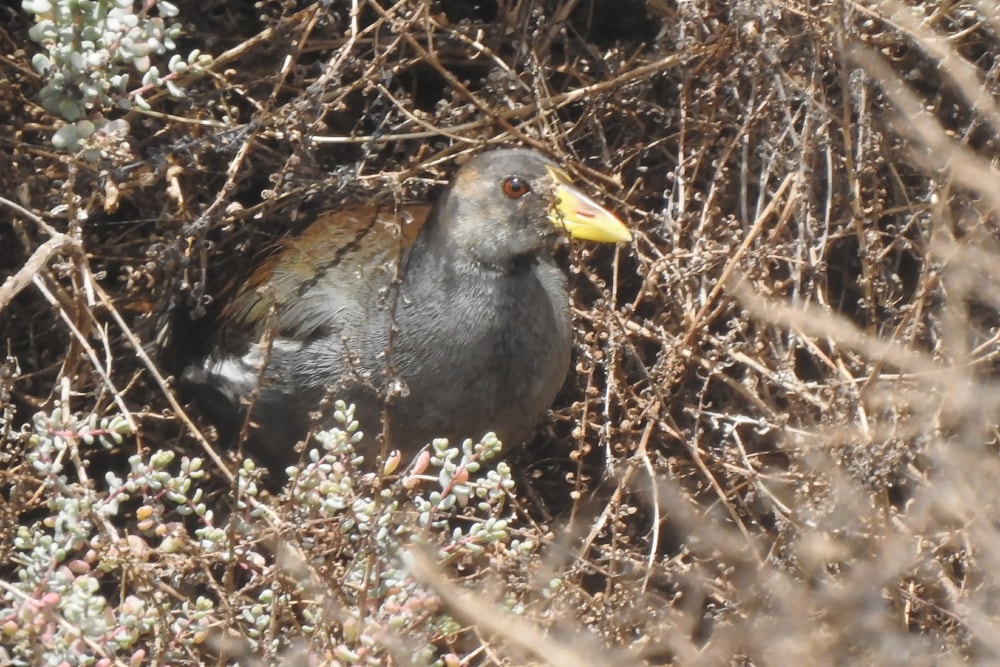On the morning of Tuesday 5 March resident Cape Verde birder Uwe Thom found a moorhen species frequenting a productive area of marsh north of Santa Maria, Sal. This area has also played host to a long-staying African Crake and a Hudsonian Whimbrel this winter, both of which were also found by Uwe. Managing only a single photo of the bird's rear end as it scarpered for cover, several birders including Pierre-André Crochet and BirdGuides' Josh Jones were intrigued by features it showed, such as the unusual leg colour, and encouraged Uwe to return and try to obtain better views. Uwe managed to see the bird better that evening, with images confirming the bird to be an immature Lesser Moorhen – the first record for Cape Verde and an extreme rarity in the Western Palearctic.

On its second day the Lesser Moorhen showed particularly well, allowing the finder to document it with over 100 high-quality images and video clips (Uwe Thom).
Although very elusive among the vegetation, the bird would occasionally pose long enough for a full suite of key ID features to be noted, most significantly the broad and deep yellow bill, which is more triangular shaped than in Common Moorhen, with a reddish wash to the culmen. Furthermore, the head and body were an overall paler slaty grey colour, particularly around the face, with a hint of darker mask, vaguely reminiscent of Sora. The legs were largely a pale pinkish-yellow, rather than the yellow-green of Common Moorhen. Lesser Moorhen is also, as its name suggests, smaller than its Common counterpart, although without that species alongside it to compare (Common Moorhen is a vagrant on Sal), judging size proved difficult.

The distinctive bill shape and colour are particularly apparent in this close-up image, as is the ghosting of a facial mask. Note also the pointed tip to the frontal shield of the bill – in Common Moorhen this feature is rounded. The brown feathering on the ear coverts is a remnant of juvenile plumage (Uwe Thom).

In this image the pale pinkish-yellow leg colour is visible, while the reddish colour on the largely yellow bill is restricted to the culmen. Note also how the slaty grey colour of the foreneck and underparts is relatively pale (Uwe Thom).
This represents the fourth record of Lesser Moorhen for the Western Palearctic and the first to be twitchable, with previous accepted occurrences as follows:
- Male collected in Funchal, Madeira, on 26 January 1895;
- First-winter taken into care aboard a ship c.5 km off Laxe, A Coruña, Spain, on 5 February 2000 (but later died);
- Female taken into care at Algeciras, Cádiz, Spain, on 10 March 2003 (but later died).
The Lesser Moorhen has lingered in the same area ever since and is still present at the time of writing [8 March]. With the African Crake also still present on 7th, Sal currently offers Western Palearctic listers an unprecedented opportunity to see two extremely rare rallids at the same site within the region.
Update 11/03/2019: A second Lesser Moorhen was belatedly reported from Santiago, Cape Verde, on 24 February 2019. It becomes the first record for the archipelago, with the Sal bird becoming the second.



